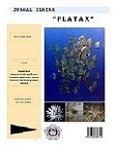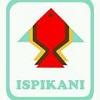Spatial Distribution of Marine Debris on Northern Coastal Waters of Minahasa
DOI:
https://doi.org/10.35800/jip.9.1.2021.34021Keywords:
Marine debris, Category, Type, CompositionAbstract
Marine debris is one of the biggest pollution problems in the world. There are various potentials of marine and beach tourism to attract tourists, but in turn, cause a waste disposal accumulation and coupled with the built-in garbage that comes from the sea. The research was conducted at Tasik Ria Beach, Tombariri, and Marine Field Station of the Faculty of Fisheries and Marine Sciences, Sam Ratulangi University in Likupang. The aims of this study were (1) to identify the types of marine debris, and (2) to determine and compare the spatial distribution pattern of marine debris in the two designed locations. The sampling technique adapted from the shoreline survey methodology designed by NOAA was used in the study. Data were then statistically processed and analyzed using data mining software (MS Excel and Orange). This study found that the category of plastic and rubber waste is the most common category with the total amount on Tasik Ria Beach 54.39% and 97.55% in the Marine Field Station of Faculty of Fisheries and Marine Sciences in Likupang respectively. The correlation coefficient between the composition of the amount and mass of marine debris is 0.89 which indicates a close relationship between the amount and mass composition. There are many factors that cause the distribution of various types of marine debris, one of which is the activities of the people around the coastal area.
Keywords: Marine debris; Category; Type; Composition
Abstrak
Sampah laut merupakan salah satu masalah polusi yang besar di dunia. Beragam potensi wisata bahari dan pantai menjadi daya tarik wisatawan namun aktivitas wisata dapat mengakibatkan adanya buangan sampah oleh masyarakat dan wisatawan, ditambah lagi dengan sampah bawaan yang berasal dari laut. Penelitian ini dilakukan di Pantai Tasik Ria, Tombariri dan Laboratorium Fakultas Perikanan dan Ilmu Kelautan Universitas Sam Ratulangi untuk mengidentifikasi jenis sampah laut di perairan pantai Minahasa bagian utara dan mengetahui persebaran dan perbandingan distribusi sampah laut dua lokasi penelitian. Berdasarkan hasil pengambilan sampel dengan mengadaptasi metode Shoreline Survey Methodology berdasarkan NOAA yang kemudian diolah dan dianalisis secara statistik dengan menggunakan beberapa perangkat lunak (MS Excel dan Orange) diperoleh kategori sampah plastik dan karet sebagai kategori yang paling banyak ditemukan dengan komposisi jumlahnya di Pantai Tasik Ria sebesar 54,39% dan 97,55% di Laboratorium Fakultas Perikanan dan Ilmu Kelautan. Nilai koefisien korelasi antara komposisi jumlah dan massa sampah laut sebesar 0.89 yang menyatakan hubungan yang erat antara komposisi jumlah dan massa. Banyaknya faktor yang menyebabkan terdistribusinya beragam jenis sampah laut, salah satunya adalah aktivitas masyarakat di sekitar wilayah pesisir.
Kata kunci: Sampah Laut; Kategori; Jenis; Komposisi
References
Bahraini, Amanda. 2018. 7 Tipe Plastik. https://waste4change.com/7-types-plastic-need-know/2/ diakses pada 13 Mei 2020
Barnes, D. K., Galgani, F., Thompson, R. C., & Barlaz, M. (2009). Accumulation and fragmentation of plastic debris in global environments. Philosophical transactions of the royal society B: biological sciences, 364(1526), 1985-1998.
CBD, S. G. (2012). Impacts of Marine Debris on Biodiversity: Current Status and Potential Solutions. Technical Series No, 67.
CSIRO. 2014. Marine debris: Sources, Distribution and Fate of Plastic and Other Refuse – and Its Impact on Ocean and Coastal Wildlife. www.csiro.au.
Dias, B. D. S. (2016). Marine debris: understanding, preventing and mitigating the significant adverse impacts on marine and coastal biodiversity. CBD technical series, (83).
Kementrian Kelautan dan Perikanan, 2020. https://kkp.go.id
Djaguna, A., Pelle, W. E., Schaduw, J. N., Manengkey, H. W., Rumampuk, N. D., & Ngangi, E. L. (2019). Identifikasi Sampah Laut Di Pantai Tongkaina Dan Talawaan Bajo. Jurnal Pesisir Dan Laut Tropis, 7(3), 174.
Hammer, J., Kraak, M. H., & Parsons, J. R. (2012). Plastics in the marine environment: the dark side of a modern gift. Reviews of environmental contamination and toxicology, 1-44.
Hidayat, Y. A., Kiranamahsa, S., & Zamal, M. A. (2019). A study of plastic waste management effectiveness in Indonesia industries. AIMS Energy, 7(3), 350-370.
Indonesia. 2014. Undang- Undang Nomor 1 tahun 2014 tentang Perubahan Atas Undang-Undang Nomor 27 tahun 2007 tentang Pengelolaan Wilayah Pesisir dan Pulau-Pulau Kecil. Jakarta: Sekretariat Negara.
Indonesia. 2008. Undang- Undang Nomor 18 tahun 2008 tentang Pengelolaan Sampah. Jakarta: Sekretariat Negara
Jambeck, J. R., Geyer, R., Wilcox, C., Siegler, T. R., Perryman, M., Andrady, A., ... & Law, K. L. (2015). Plastic waste inputs from land into the ocean. Science, 347(6223), 768-771.
Kadim, M., Asumbo, A. (2019). Komposisi Dan Karakterisrik Mikroplastik Di Sekitar Wilayah Perairan Kota Gorontalo. 60.
Kusumawati, I., Setyowati, M., & Salena, I. Y. (2018). Identifikasi Komposisi Sampah Laut Di Pesisir Aceh Barat. Jurnal Perikanan Tropis, 5(1), 59-69.
Lippiatt, S., Opfer, S., & Arthur, C. (2013). Marine debris monitoring and assessment: recommendations for monitoring debris trends in the marine environment.
MOUAT, J., Lozano, R. L., & Bateson, H. (2010). Economic Impacts of Marine Litter. KIMO International. Problems or Solution, 112-119.
NOAA. 2015. Turning the Tide on Trash. A Learning Guide On Marine Debris. NOAA PIFSC CRED.
NOAA, H. (2016). Marine Debris Impact on Coastal and Benthic Habitats. NOAA, Maryland.
Pasternak, G., Ribic, C. A., Spanier, E., Ariel, A., Mayzel, B., Ohayon, S., & Zviely, D. (2019). Nearshore survey and cleanup of benthic marine debris using citizen science divers along the Mediterranean coast of Israel. Ocean & Coastal Management, 175, 17-32.
Pawar, P. R., Shirgaonkar, S. S., & Patil, R. B. (2016). Plastic marine debris: Sources, distribution and impacts on coastal and ocean biodiversity. PENCIL Publication of Biological Sciences, 3(1), 40-54.
Ryan, P. G., Moore, C. J., Van Franeker, J. A., & Moloney, C. L. (2009). Monitoring the abundance of plastic debris in the marine environment. Philosophical Transactions of the Royal Society B: Biological Sciences, 364(1526), 1999-2012.
Schüttpelz, N.S., 2014. Measuring Marine Litter density, mass and composition 158.
Tassakka, M. I. S., Musrianton, M., Admaja, A. K., Alsita, I., & Runtu, K. G. A. (2019). Perbandingan Timbulan Sampah Laut dan Daratan di Lokasi Wisata Berbasis Konservasi. Jurnal Airaha, 8(02), 172-182.
United Nations Environmental Programme (UNEP). 2005. Marine litter, an analytical overview. United Nations Environment Programme, Nairobi
United Nations Environmental Programme (UNEP). 2009. Survey and Monitoring of Marine Litter, Regional Seas Reports and Studies No. 186 IOC Technical Series No.83
Wakhidah, K., Dewi, S. P., & Ristianti, N. S. (2014). Bentuk Pengembangan Pariwisata Pesisir Berkelanjutan Di Kabupaten Pekalongan. Ruang, 1(2), 261-270.
World Bank Group. Hotspot Sampah Laut Indonesia. 2018. http://documents.worldbank.org/.
Yuliadi, L. P. S. (2017). Optimalisasi pengelolaan sampah pesisir untuk mendukung kebersihan lingkungan dalam upaya mengurangi sampah plastik dan penyelamatan pantai pangandaran. Jurnal Pengabdian Kepada Masyarakat, 1(1).
Zhukov, A. (2017). The distribution, abundance and characteristics of plastic debris along the Coast of Grândola, Portugal.
Downloads
Published
How to Cite
Issue
Section
License
COPYRIGHT
Authors who publish with this journal agree to the following terms:
Authors hold their copyright and grant this journal the privilege of first publication, with the work simultaneously licensed under a Creative Commons Attribution License that permits others to impart the work with an acknowledgment of the work's origin and initial publication by this journal.
Authors can enter into separate or additional contractual arrangements for the non-exclusive distribution of the journal's published version of the work (for example, post it to an institutional repository or publish it in a book), with an acknowledgment of its underlying publication in this journal.
Authors are permitted and encouraged to post their work online (for example, in institutional repositories or on their website) as it can lead to productive exchanges, as well as earlier and greater citation of the published work (See The Effect of Open Access).


















